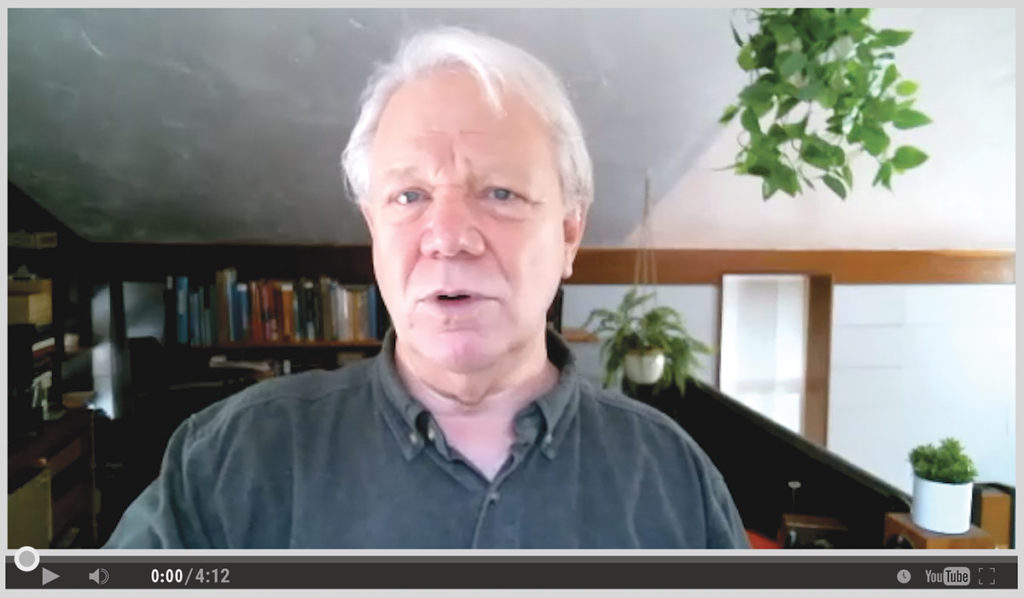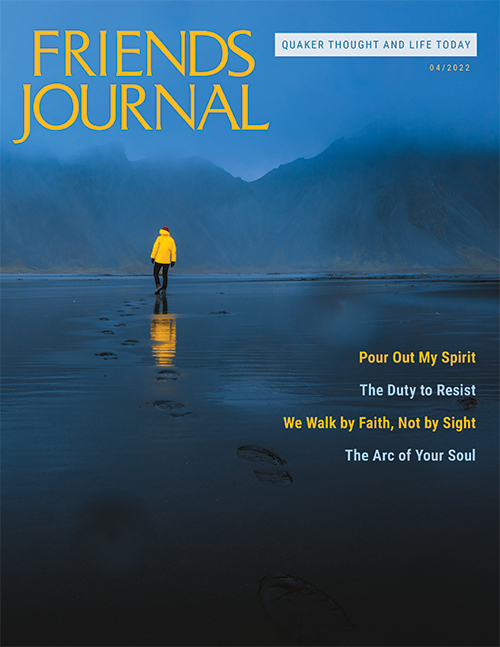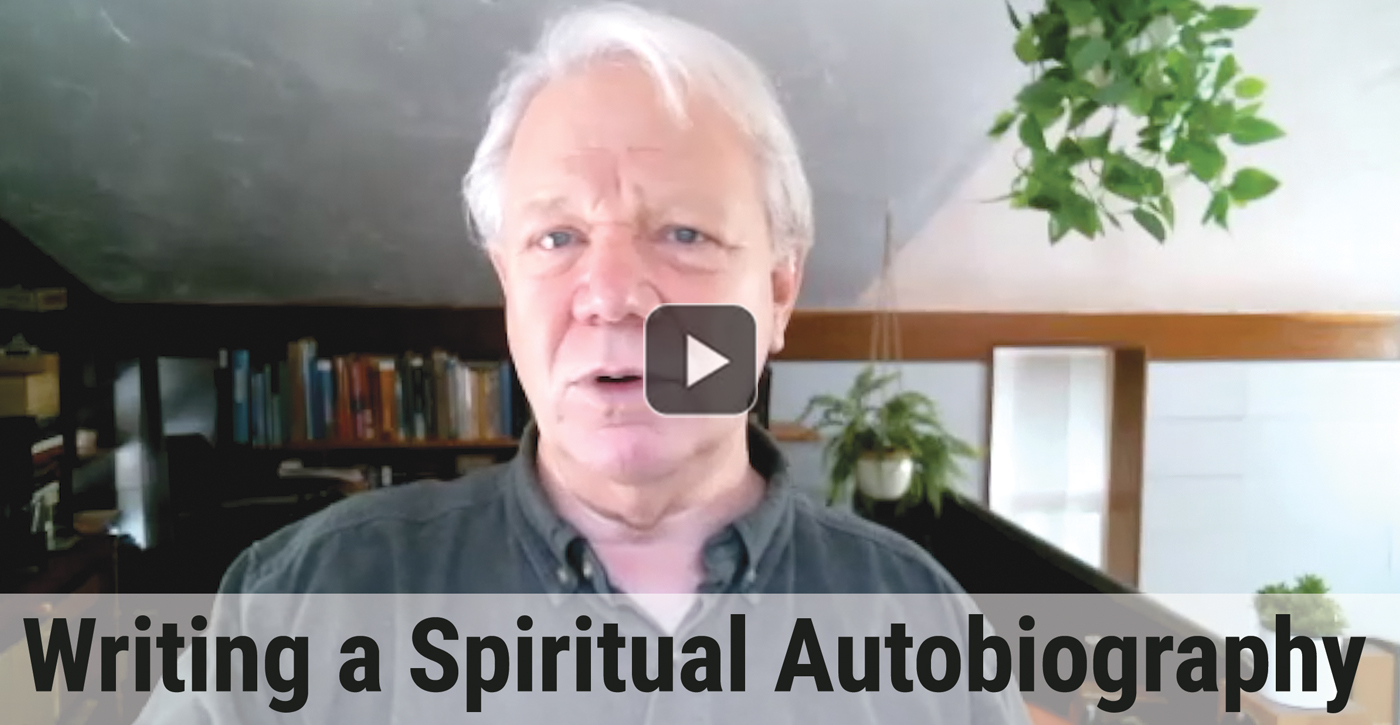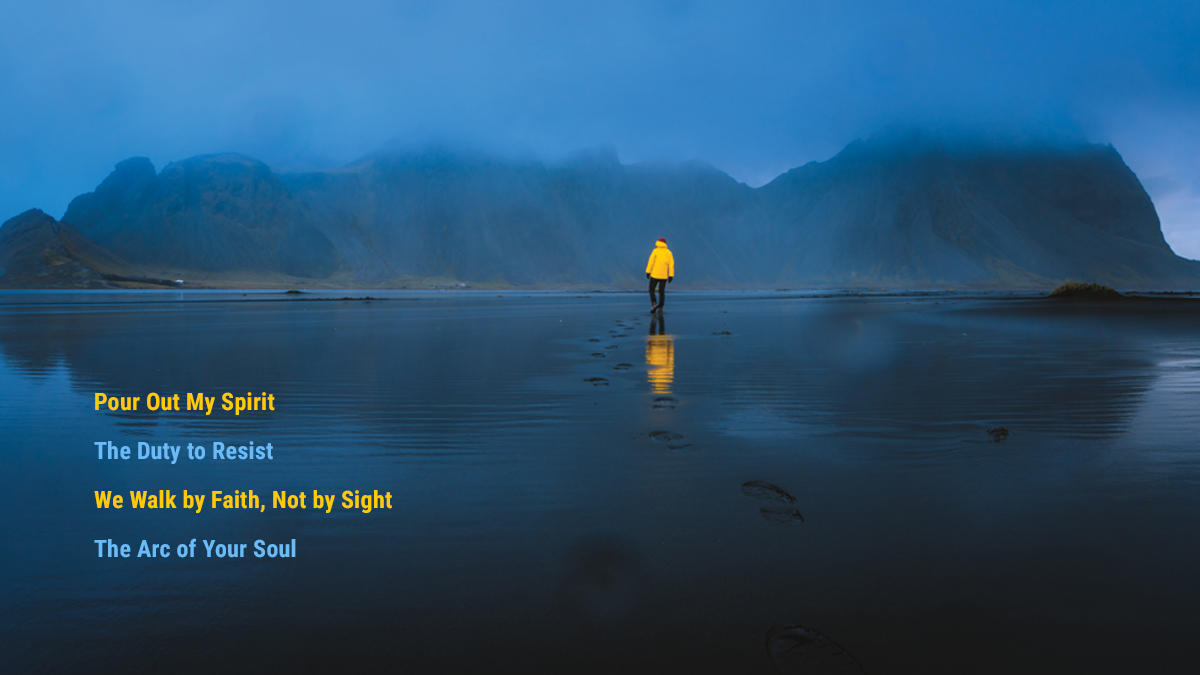Writing a Quaker Spiritual Autobiography
Why write a spiritual autobiography? One reason is that it helps you hear what your life says about its meaning. Your life speaks to you. Writing a spiritual autobiography brings you “face-to-face with the meaning of your personal existence,” to borrow a phrase from Ira Progoff. Writing it also helps you see the direction your spiritual life has been taking and where you’ve been led.
These are some of the reasons I wanted to write a spiritual autobiography. It would give me an opportunity to reflect on my whole life: asking “what does it mean?” People don’t do that very often, but you have to if you write a spiritual autobiography. Writing will give you a bird’s-eye view that lets you see years-long and decades-long patterns of spiritual growth that were invisible before.
All this assumes that you’re writing to gain insight into your spiritual life, but there are other reasons for writing a spiritual autobiography. We may write because “we want to pass our stories along to our children, or . . . to share our soul’s journey with loved ones, or . . . our experiences have been so transformational, our insights so hard earned, that we feel compelled to share them,” according to Elizabeth Andrews, author of Spiritual Memoir.
Quakers have written over a thousand spiritual autobiographies since the 1600s. In his book Quaker Journals: Varieties of Religious Experience Among Friends Howard Brinton wrote that “the religious autobiography, usually called a ‘Journal,’ has been the most characteristic form of Quaker writing.” It’s also one of the most influential forms. Two of the books that have had the greatest impact on Quakerism are spiritual autobiographies: The Journal of George Fox and The Journal of John Woolman.
Early Quaker authors often wrote about their inner conflict and struggle with the temptations of worldly activity, which they ultimately resolved by living according to the guidance of the inner teacher. This results in inner peace. They often wrote to encourage others on the spiritual path.

Photo by Eugene Chystiakov on Unsplash
A Course on Writing a Spiritual Autobiography
I taught a course on writing a spiritual autobiography in my monthly meeting and used the process of teaching it to write one of my own. Since this was an eight-week course and we wanted everyone to be able to read their spiritual autobiography to the class, ours were short: about ten pages. This could’ve been an end in itself or a starting point for those in the class who wanted to write a full-length spiritual autobiography.
Often we started a writing exercise in class and completed it in the following week. Since writing about spiritual life involves sensitive topics and our deepest values, I took a supportive, criticism-free approach to feedback. I suggested that the participants give feedback that addressed questions like: What part of this did you want to read more about? What did you find most moving? What did you most enjoy about this draft?
The course’s first evening began with an exercise based on James Fowler’s influential theory of faith development throughout the lifespan. Years earlier I corresponded with him, asking for advice about teaching his theory in my psychology of religion course. He recommended his Life Tapestry exercise, and that’s what we used in the spiritual autobiography course. The exercise has you divide your life into roughly ten periods. For each period, you write down a phrase or two that describes your image of God or the sacred, and your main sources of meaning. This helps you see how these evolved throughout your life. It can help you see where the Spirit has been leading you.
This exercise changed the way I understood my spiritual life. I saw how my activism (in areas like antiracism, workplace democracy, psychiatric patients’ rights, and religious and spiritual diversity in the workplace) was an important source of meaning throughout my life—from junior high school to now. The exercise helped me see how I experienced this source of meaning as separate from my spiritual life until I became a Quaker in my thirties.
The exercise also underscored how much spiritual promiscuity characterized my youth, when I was seeking a spiritual home. I was raised Presbyterian and experimented with Unitarianism, Quakerism, Evangelicalism, and the Neo-American Church in high school. After that, I practiced Transcendental Meditation, Vipassana Buddhism, Subud, Sahaj Marg, Siddha Yoga, and Zen.
After we wrote something in class, we would silently reread whatever we had just written. I learned this technique from a workshop in Ira Progoff’s intensive journal method that I had taken shortly before teaching the course. His book At a Journal Workshop is the most influential book on journal writing and has stayed in print for over 50 years. Progoff, a psychologist, was heavily influenced by attending the Friends Conference on Psychology and Religion at Haverford College and his subsequent stay at Pendle Hill Study Center, where he studied Quaker spiritual autobiographies. Quakerism’s influence shows in his intensive journal workshop. He believes that “growth takes place in a person by working at a deep inner level in a sustained atmosphere of silence.” Most of the workshop is held in silence. His method also teaches that writing something is often not as significant as rereading what you wrote and how you feel about what you’ve written. I would ask my class to reread what they wrote and to jot down any feelings or other reactions they had about it in the margins. Focusing on how we experience what we’ve written can guide us: letting us know what feels right.
Much of each class session was silent, but not all of it. Participants also had the opportunity to read what they had written to the class. As we listened, we learned from each other’s experience and got a sense of the wide range of what others felt was spiritual. Early Friends often learned how to live as a Quaker by reading spiritual autobiographies (or hearing them read). Back then, they couldn’t learn this from a statement of belief that they had to recite; there was no Quaker creed. But they still needed to learn what it meant to live as a Quaker, and spiritual autobiographies helped to fill that need. They described problems that Quakers faced and the ways they dealt with them. Our spiritual autobiography course continued in that tradition.
The Quaker tradition of spiritual autobiography continues both in writing and through talks. Some monthly meetings have members and attenders give talks in which they share their spiritual life stories. Some meetings even make recordings of these talks for their library. Others have an oral history project in which they interview members about their lives as Quakers and make the recordings available.
Early Quaker authors often wrote about their inner conflict and struggle with the temptations of worldly activity, which they ultimately resolved by living according to the guidance of the inner teacher. This results in inner peace. They often wrote to encourage others on the spiritual path.
Discovering Direction in Your Spiritual Life
Two exercises in the class helped us to see how our spirituality has been changing over our lifetimes. They reveal the arc, or threads of continuity, that run through our spiritual lives. In one exercise, we identified turning points in our spiritual lives.
The other exercise started with imagining that our spiritual life was a book in which we wrote down chapter headings. Then we took ten sheets of paper, wrote the chapter title at the top of each page, and for half an hour we fleshed out the chapters by jotting down notes for each one. We broke into dyads and shared what we learned from this. Over the next week, we expanded our jottings into a paragraph for each chapter. This gave us a very brief—four to five page—sketch of our spirituality as we experienced it throughout our lives. It helped us to see the direction our spiritual life has taken and is headed. Ira Progoff says that through exercises such as these, “We gradually discover that our life has been going somewhere.” The spiritual directions that we uncover could be good or bad. For me, some directions were good, and some were not. Recognizing a lifelong, not-so-good direction I’ve been moving in motivated me: it impressed on me that I’m going to keep going in this direction unless I do something to change it.
I identified six major directions in my spiritual life. Here are a few of them:
1. I moved from a scattered and seeking spiritual life to one that’s more focused and deeper. I mentioned earlier how I had joined many different Christian, Hindu, Buddhist, and Islamic groups. In my thirties, I left this to settle down to a committed Quaker and mindfulness practice.
2. I moved from a somewhat thoughtless, closed-minded spirituality to a greater ability to think for myself and apply my critical faculties to spiritual and religious issues.
3. I became increasingly concerned with ethics. I began teaching courses in business ethics and advocating for increasing the emphasis on ethics in the curriculum of the business schools where I taught.
Looking for lifelong trends helped me see the influence of social factors on my spiritual decisions, and how their influence decreased over time. When I was young, they had way too much influence. For example, in my late twenties, I spent two years practicing Sahaj Marg (which is a mix of Hinduism and mystical Islam), even though I never really understood it and didn’t get much out of it. But I tried very hard and attended the local meetings religiously—all because I had a giant crush on a woman in the group.
I had not seen these patterns clearly before, probably because I had not really thought much about lifelong spiritual patterns. But now I saw several directions I had been heading.
What did I get from writing a spiritual autobiography? I got a deeper understanding of my spiritual life, from my earliest days to the present. Reflecting on the role of spirituality in my life as a whole gave me a new perspective.
Reflecting on Your Current Spiritual State
In another exercise, we reflected on our current spiritual state. I was clearly unhappy with how often I engaged in spiritual practices such as mindfulness or discernment.
Reflecting on your spiritual state helps you identify your strengths and challenges. When I did this, I saw that one of my strengths was my intellectual and independent understanding of spirituality. I got this in part from teaching psychology of religion and critical thinking, and from my training in the social sciences. I also saw a challenge: my spiritual practices did not have the effect on the way I feel and act in my day-to-day life that I had hoped for. Although over the years I had become more caring, less angry, more empathic, and more mindful, I was still overly focused on intellectual understanding and not engaging in enough spiritual practice. I felt like I was the Quaker equivalent of what some Buddhists call a Barnes-and-Noble Buddhist. Reflecting on my spiritual state showed me what I needed to work on. The question was how to do it. I was experiencing something close to the inner conflict described in many Quaker spiritual autobiographies of the 1600s and 1700s in which the Inner Teacher calls to the author to do something, but they are unable to follow through on it.

Watch the author’s QuakerSpeak interview, “Writing a Spiritual Autobiography,” at fdsj.nl/autobiography.
Discovering the Spiritual in Your Life
When I started this process of autobiographical spiritual reflection, my conception of spirituality was narrow. I primarily thought of it in terms of mystical experience, belonging to a spiritual community like Quaker meeting, and engaging in a spiritual practice such as meditation. The exercises in the course helped me to identify several directions that my spiritual life was moving, and I was kind of pleased with myself: that is, until I realized what I had left out. For example, I had overlooked everything to do with my work life. This was ironic since I helped found the academic sub-disciplines of spirituality in the workplace and mindfulness in the workplace.
I also saw that I often don’t recognize or appreciate sources of meaning in my life. But writing a spiritual autobiography requires that you see your life through a spiritual lens, and this can help you to recognize that activities you hadn’t thought of as spiritual do have a spiritual quality.
An exercise that helped with this had us remember moments where we were connected to something larger than ourselves. Some of what I remembered included the following:
- Clerking a committee meeting with such strong concentration on Quaker process that I could sense my ego dissolving
- Moments of mindful open-heartedness that happened while raising my son
- Intense happiness that felt like it was beaming out of me when I was getting married by a traffic court judge (who took a short break from a trial to do the ceremony)
- Singing “Amazing Grace” with the rest of the audience in a performance of the Preservation Hall Jazz Band in New Orleans
This exercise made me realize that when I thought of the spiritual aspects of my life, I had left out things that weren’t explicitly religious, such as transcendent moments having to do with love and music. I’d also left out less rarefied, more ordinary expressions of kindness, empathy, and compassion with my family, students, friends, colleagues, Friends, and others. The exercise helped me see how the spiritual suffused so many different parts of my life, and I was reminded of something the Dalai Lama said. Although he meditates for eight hours a day and must have had many transcendent experiences, he doesn’t define his faith in terms of them. Instead, he thinks of it in more ordinary terms, saying, “My religion is very simple. My religion is kindness.”
So when it was all done, what did I get from writing a spiritual autobiography? I got a deeper understanding of my spiritual life, from my earliest days to the present. Reflecting on the role of spirituality in my life as a whole gave me a new perspective. It was like I could look down from the summit of the highest peak in a mountain range, and in the various spiritual mountains and valleys, I could see the paths I’ve taken, including paths I’d forgotten; paths that led to dead ends; and paths I hadn’t realized were part of my journey. And paths I still need to walk.






Comments on Friendsjournal.org may be used in the Forum of the print magazine and may be edited for length and clarity.